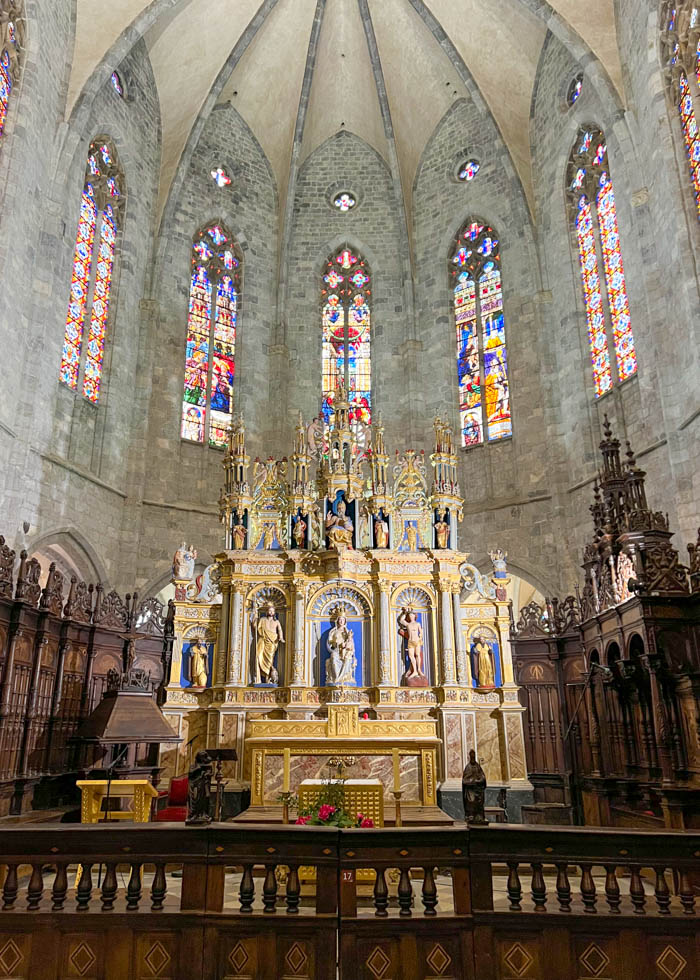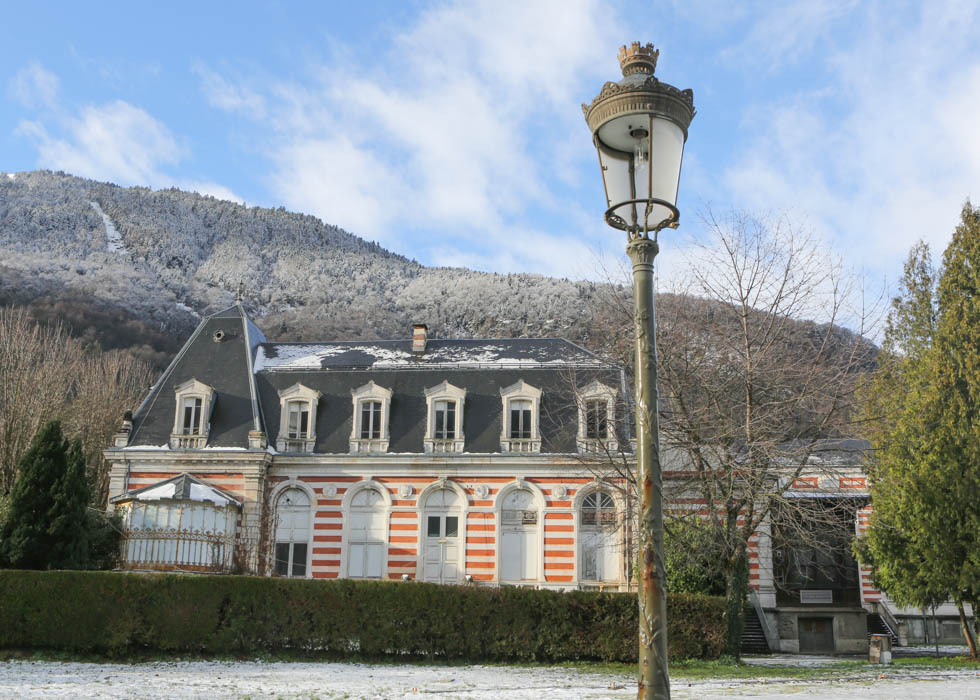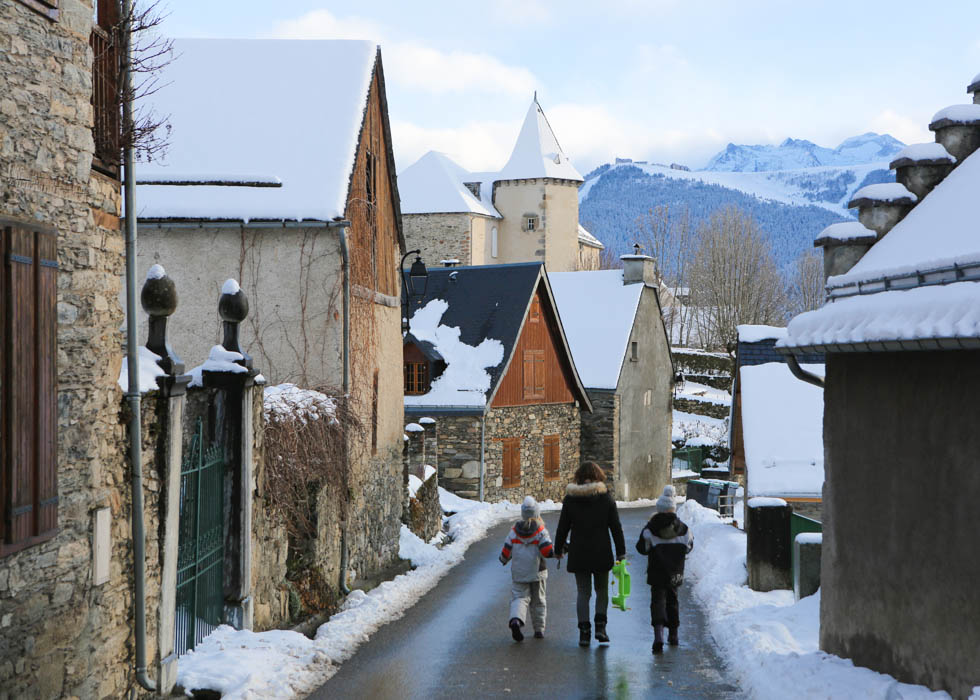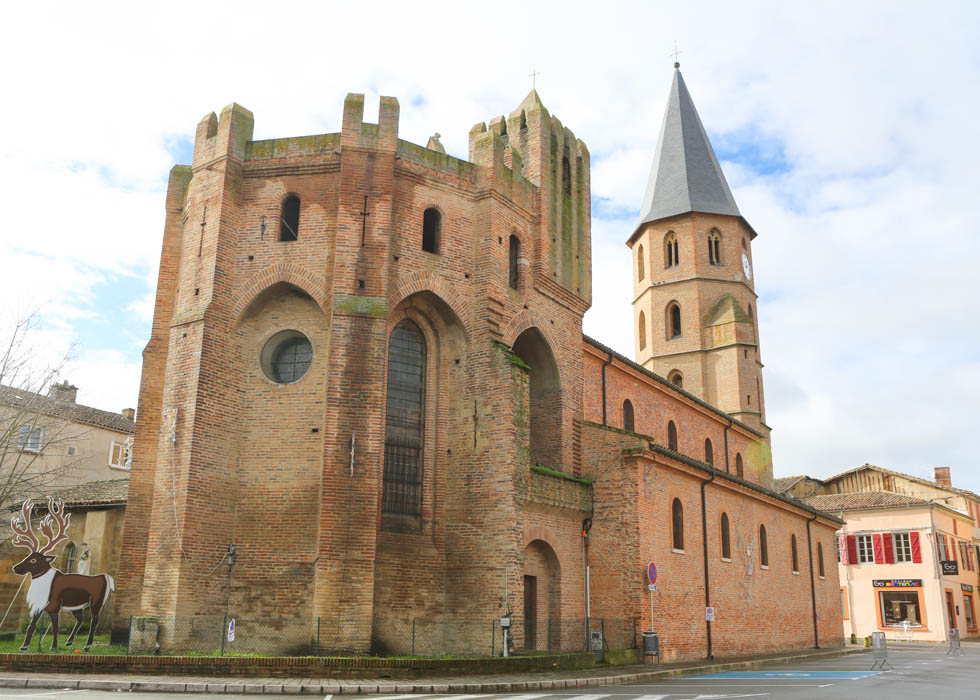
.jpg) Pyrénées is a popular destination for French people to spend either their winter holidays (for skiing) or summer holidays (for hiking). Unfortunately, worldwide, this mountain range is less famous and less visited that the Alps. In this article, we focus on an emblematic area of Pyrénées, Comminges, and the stunning Unesco World Heritage site of Saint-Bertrand, an unforgettable and unique experience.
Pyrénées is a popular destination for French people to spend either their winter holidays (for skiing) or summer holidays (for hiking). Unfortunately, worldwide, this mountain range is less famous and less visited that the Alps. In this article, we focus on an emblematic area of Pyrénées, Comminges, and the stunning Unesco World Heritage site of Saint-Bertrand, an unforgettable and unique experience.
Saint-Bertrand-de-Comminges is a place with a very rich History, known in France for being the "Mont Saint-Michel" of Pyrénées. What is now a relatively small town, played a major role in History: during Roman Empire, the city (called Lugdunum Convenarum) was a major hub between the territories which are now France and Spain. There are plenty of vestiges from Antiquity, and every year archeological excavations are carried out in the surroundings.
.jpg)
The antique town was destroyed during the fall of the Roman Empire, but Later on, the town became an important religious center. There are plenty of buildings that date back from the Middle Age, which makes Saint-Bertrand a unique Medieval town. The cathedral has been listed as a UNESCO World Heritage Site as part of the World Heritage Sites of the Routes of Santiago de Compostela in France, in 1998.
Apart from its historical and architectural interest, Saint-Bertrand worths the visit because of its beautiful surroundings, foothills of Pyrénées. The town center is very dynamic, with several great French restaurants, souvenir shops, bookshop,s and craftsmen (leatherworkers, black-smith...).
Of course, the main attraction is the UNESCO-listed Cathedral. Circled by ancient houses and steep ramparts, the cathedral rises to 1700 feet, dominating, from the top of its acropolis, the land around.
.jpg)
The nowadays cathedral has parts from 3 different periods: a Romanesque part of the 12th century, a Gothic part of the 14th century and a Renaissance from the sixteenth century. Only a small part of the Cathedral is of free access. In order to visit the whole building, including a museum and a garden, you need to pay 7€.
.jpg) Among the places you can visit, the most breathtaking one is the cloister, which dates back (for its older parts) to the 12th century. The Romanesque arches are resting on a double row of decorated columns (on the photo above you can see the pillar of the four evangelists). The southern gallery has the unique feature of opening out onto the surrounding countryside, with a unique viewpoint.
Among the places you can visit, the most breathtaking one is the cloister, which dates back (for its older parts) to the 12th century. The Romanesque arches are resting on a double row of decorated columns (on the photo above you can see the pillar of the four evangelists). The southern gallery has the unique feature of opening out onto the surrounding countryside, with a unique viewpoint.

The Gothic part is built in the Meridional Gothic style. There is a single nave that is 55m long, 16m wide, and 28m tall. The amazing organ dates from 1550. There are also 67 beautiful wooden carved stalls (fixed seats with the sides and backs connected). The tomb of Saint Bertrand (a local Bishop who played a major role in the region and was later on lifted to sainthood), with numerous medieval paintings, is also remarkable.
Outside of the cathedral, the Olivetains is an information center and a museum which features various exhibitions, including some interesting artifacts from the region.
.jpg) The village itself is not that big but full of well-preserved medieval buildings. The town is one of the "most beautiful villages of France", a very selective label. Three medieval entrances (the most beautiful being "porte Majou") and a substantial part of the fortified walls are still visible. There are plenty of traditional half-timbered and colombages houses, with impressive carpentry work, dating back to the 15th century. The most impressive one is Maison Bridaut (photo above). The lower part of the town, in the plain (called "ville basse") is next to some of the remaining of antique town ruines (Lugdunum Convenarum), which are free to access.
The village itself is not that big but full of well-preserved medieval buildings. The town is one of the "most beautiful villages of France", a very selective label. Three medieval entrances (the most beautiful being "porte Majou") and a substantial part of the fortified walls are still visible. There are plenty of traditional half-timbered and colombages houses, with impressive carpentry work, dating back to the 15th century. The most impressive one is Maison Bridaut (photo above). The lower part of the town, in the plain (called "ville basse") is next to some of the remaining of antique town ruines (Lugdunum Convenarum), which are free to access.
.jpg) Not far from Saint-Bertrand (5 minutes by car, 30 minutes by walk), you can find the small village of Valcabrère, which really worth the visit, especially for its 12th-century church. Surrounded by picturesque countryside, the Basilica of Saint-Just-de-Valcabrere is a jewel of Romanesque architecture.
Not far from Saint-Bertrand (5 minutes by car, 30 minutes by walk), you can find the small village of Valcabrère, which really worth the visit, especially for its 12th-century church. Surrounded by picturesque countryside, the Basilica of Saint-Just-de-Valcabrere is a jewel of Romanesque architecture.
.jpg) The most interesting fact is that many stones that were used to build the Basicila were actually taken from the nearby Roman town ruins. On most of the wall you can find beautifully carved stones which are roman re-employments. Visiting the Basilica cost only 3€, and a free App can give you access to English guidance. Outside of the Basilica, archeologists are carrying out research on the ruins of the roman town and necropolis.
The most interesting fact is that many stones that were used to build the Basicila were actually taken from the nearby Roman town ruins. On most of the wall you can find beautifully carved stones which are roman re-employments. Visiting the Basilica cost only 3€, and a free App can give you access to English guidance. Outside of the Basilica, archeologists are carrying out research on the ruins of the roman town and necropolis.
Each season offers a different atmosphere. You might prefer to see snow on the hills around to enjoy the flowers on the tree, or to admire the beautiful colors of autumn. The peak tourist season is summer when the town is the most dynamic but also very crowded. Every year, between July and August, takes place the Comminges International music festival. This classical music festival attracts great musicians from all around the world, which are mostly playing in the Cathedral, on the marvelous organ.
.jpg)
There is no public transportation to reach Saint-Bertrand. At some point of time you need to rent a car or take a Taxi to reach the place. It is highly recommended to rent a car, to explore the Pyrénées region. Saint Bertrand de Comminges is only 1h20 from Toulouse. The closest train station is Montrejeau - Gourdan Polignan station. There is a car park in the upper part of the town, and one in the lower part. The upper part one is closed in summer: cars can park in the lower car park and take a little train to reach the upper part of the town (2€).
Being in the middle of Pyrénées, Saint-Bertrand-de-Comminges is a perfect spot to discover the beautiful region of Comminges and Pyrénées. We listed some attractive places very near to Saint-Bertrand.
.jpg)
If you are in search of authenticity, you should not miss Barousse valley. Crossed by the river Ourse, the upper valley is covered with forests, while the central part is made up of grasslands. The low population density of the valley has turned it into a haven for nature lovers and people wishing to discover some of the wildest parts of the Pyrenees, where a spectacular landscape is combined with a rich historical heritage and many old monuments.
.jpg)
Among the beautiful and traditional stone villages, you should not miss Mauléon-Barousse, Ferrère, Esbareich, Ourde, as well as Bramevaque castle ruins (photo above).
.jpg)
You should also explore the "Gouffre de la Saoule" (Saoule chasm), a beautiful cascade of Ourse river. But it's also a great occasion to discover amazing local and organic food. The region is famous for it's meats.
.jpg)
But the most emblematic food is of course the local Pyrénées cheese, "Fromage de Barousse": made in a very traditional way, from cow or sheep milk, this cheese is well known for being one of the best of Central Pyrénées.
.jpg)
Most of the cheesemakers live in the village of Sost, where some sheepfolds can be visited.
.jpg)
But the best experience is to stroll around the little villages, interact with the locals, and enjoy the quietness and authenticity of Pyrénées. It's a time travel to traditional France, and a way to discover rural France hospitality.
.jpg)
Last but not least, if you love animals you will have the chance to see plenty of them in this very rural area!

Since the 19th century, Luchon is a prominent spa time: the popularity of the thermal waters was launched by Emperor Napoleon III. The city further developed its popularity and started to attract cosmopolitan tourists with the beginnings of "Pyreneism" launched by Count Russell-Killough. Most of the city center's beautiful mansions date back to this Golden Age.
 Half an hour car ride from Saint-Bertrand-de-Comminges, Luchon is located in a higher mountain area. With its stunning landscapes and high mountains around, it's an amazing sports spot, especially renowned for winter sports (especially the ski Station Superbagnères).
Half an hour car ride from Saint-Bertrand-de-Comminges, Luchon is located in a higher mountain area. With its stunning landscapes and high mountains around, it's an amazing sports spot, especially renowned for winter sports (especially the ski Station Superbagnères).
 In Luchon, as well as in many other places in Central Pyrénées, you can try de delicious "Gâteau à la Broche" (Spit cake). It is made with layers of dough or batter deposited, one at a time, onto a tapered cylindrical rotating spit. The dough is baked by an open fire, usually in the streets (rotisserie style).
In Luchon, as well as in many other places in Central Pyrénées, you can try de delicious "Gâteau à la Broche" (Spit cake). It is made with layers of dough or batter deposited, one at a time, onto a tapered cylindrical rotating spit. The dough is baked by an open fire, usually in the streets (rotisserie style).
Comminges is the Historical region around Saint-Bertrand, in the foothills of Pyrénées. It used to be a powerful county during middle age. As a results, there are plenty of historical places to visit around.

Among the interesting cities of the area, the most notables are Montrejeau, Saint-Gaudens, Aspet, Aurignac, l'Isle en Dodon (photo above)..jpg)
We hope that this article helped you to prepare for your trip to Saint-Bertrand-de-Comminges or made you want to visit this amazing place!
Author and photos: Vincent Sacau